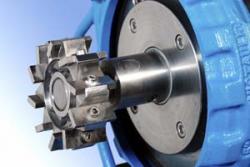plasticker-News
| 2008-07-21 |

|
BKG: Underwater Pelletizing Systems for Wood Polymer Composites
|
Worldwide, the so-called wood polymer composites (WPC) become more and more important. On the one hand, that results from the possibility to thus replace more and more tropical wood. On the other hand, wood fibres resp. saw dust are considerably cheaper than polymer which is thus cheaply stretched. These materials, which have very advantageous mechanical characteristics, are processed in the injection moulding and extrusion area and are for example used for the exterior application in terrace building. For the production of wood polymer composites, BKG Bruckmann & Kreyenborg Granuliertechnik GmbH (www.bkg.de) has just delivered two complete underwater pelletizing systems. Whereas with one line, polyolefines with a wood content of up to 60 % are produced, the other line is used for material with the same content of polypropylene and oil palm fibres. Both lines have a throughput capacity of 500–600 kg/h. For the trend towards such composites, BKG underwater pelletizing lines are perfectly suitable. When using conventional strand pelletizing systems, at the latest, at a wood content of 40%, constant strand breakage is noticed. However, for underwater pelletizing systems a wood content of up to 65% is no problem. Moreover, after insignificant retrofitting, it is possible to produce different pellet sizes with one line. Photo: Cutter hub mounted on a BKG pelletizer |
BKG Bruckmann & Kreyenborg Granuliertechnik GmbH, Münster, Germany












